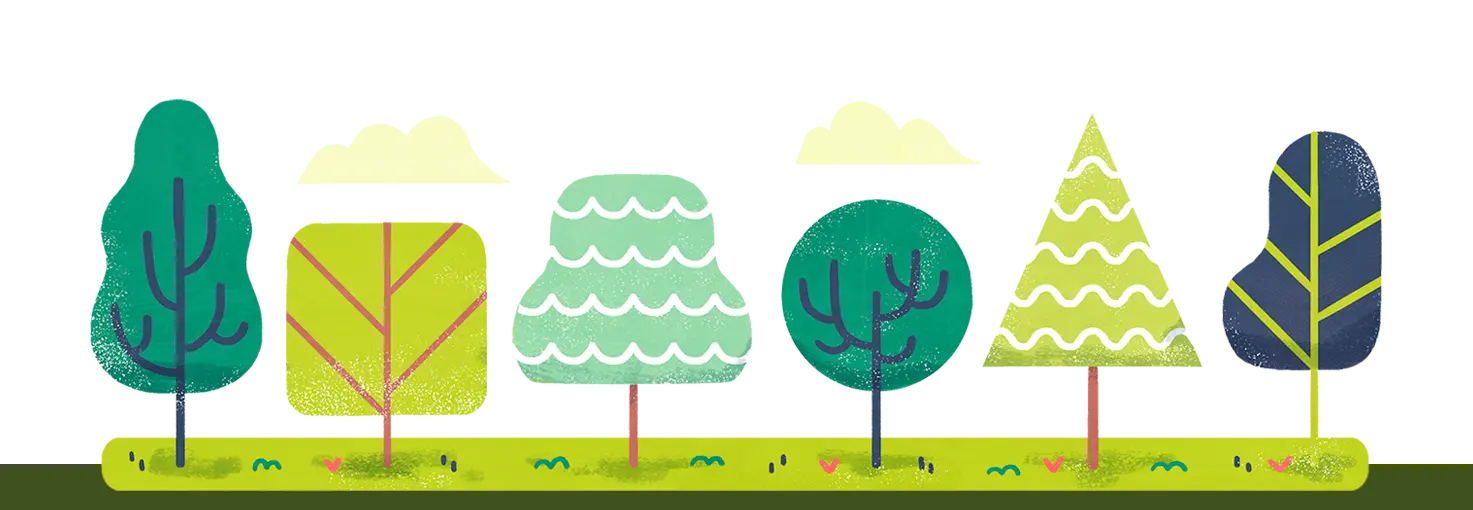Tag: tree giveaway
2022 Tree Species Details
Check out our 2022 Tree Species below and review our Tree Planting Guide:
Douglasfir
(Colorado, Idaho, Montana, Oregon, Utah, Washington, Wyoming)
Botanist-explorer David Douglas — this tree’s namesake — described it as “one of the most striking and truly graceful objects in nature.” Tree expert Michael Dirr heralded it as “one of the noblest forest trees.” To say the Douglas Fir is beloved by the tree people of the world is definitely accurate.
The general public has a number of reasons to appreciate this tree as well. Douglasfir is one of the nation’s most important lumber species, it makes up nearly half of all Christmas trees grown in the U.S., and its attractive appearance and growth rate make it popular in yards and parks.
The Douglasfir grows to a height of 40–70 feet and a spread of 12–20 feet at maturity.
This tree grows at a medium rate, with height increases of 13–24 inches per year.
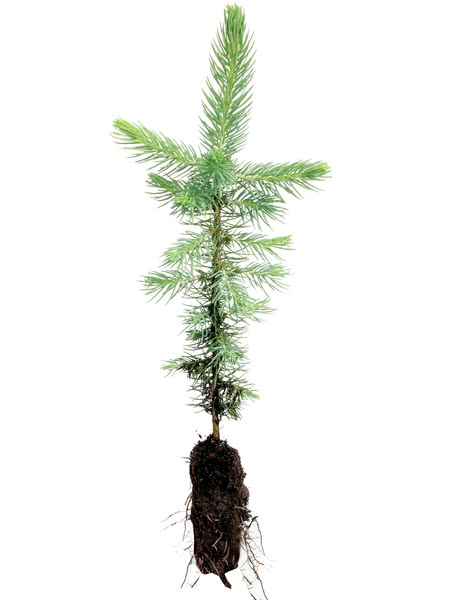
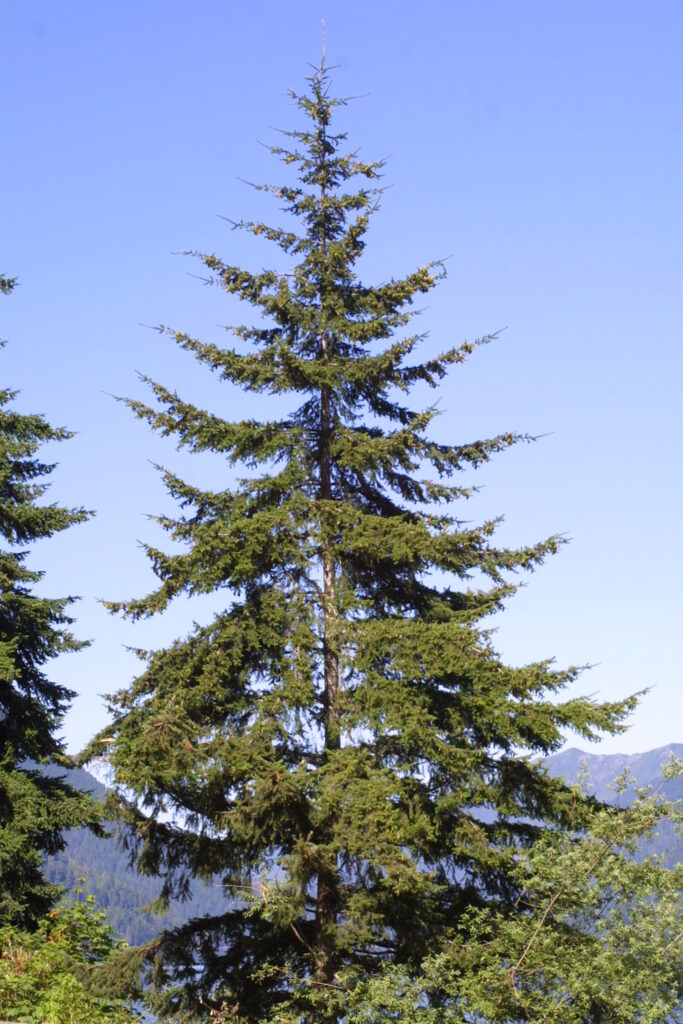
Full sun and partial shade are best for this tree, meaning it prefers a minimum of four hours of direct, unfiltered sunlight each day.
The Douglasfir prefers acidic or neutral soil that is well-drained, though it can also be found in its native habitat of rocky mountain slopes. It is sensitive to drought.
This tree does best on a roomy site with an abundance of atmospheric moisture and can be injured by high winds.
Douglasfir seeds are used by blue grouse, songbirds, squirrels, rabbits and other small animals. Antelope, deer, elk, mountain goats and mountain sheep eat the twigs and foliage. It provides excellent cover for a wide range of animals.
While the Douglasfir may have first been introduced to cultivation by botanist-explorer David Douglas in 1826, its importance to American history continues unabated. As well as being the country’s top source of lumber today, the Douglasfir also helped settle the West, providing railroad ties and telephone/telegraph poles.
Source: Arbor Day Foundation
Eastern Redcedar
(Arkansas, Georgia, Iowa, Kansas, Kentucky, Louisiana, Mississippi, Missouri, Nebraska, New Jersey, North Carolina, Ohio)
The eastern redcedar grows to a height of 40–50 feet and a spread of 8–20 feet at maturity and grows at a medium rate, with height increases of 13–24 inches per year.
Redcedars are unusually long-lived, with the potential to live over 900 years. The oldest tree reported, from West Virginia, is 940 years old!

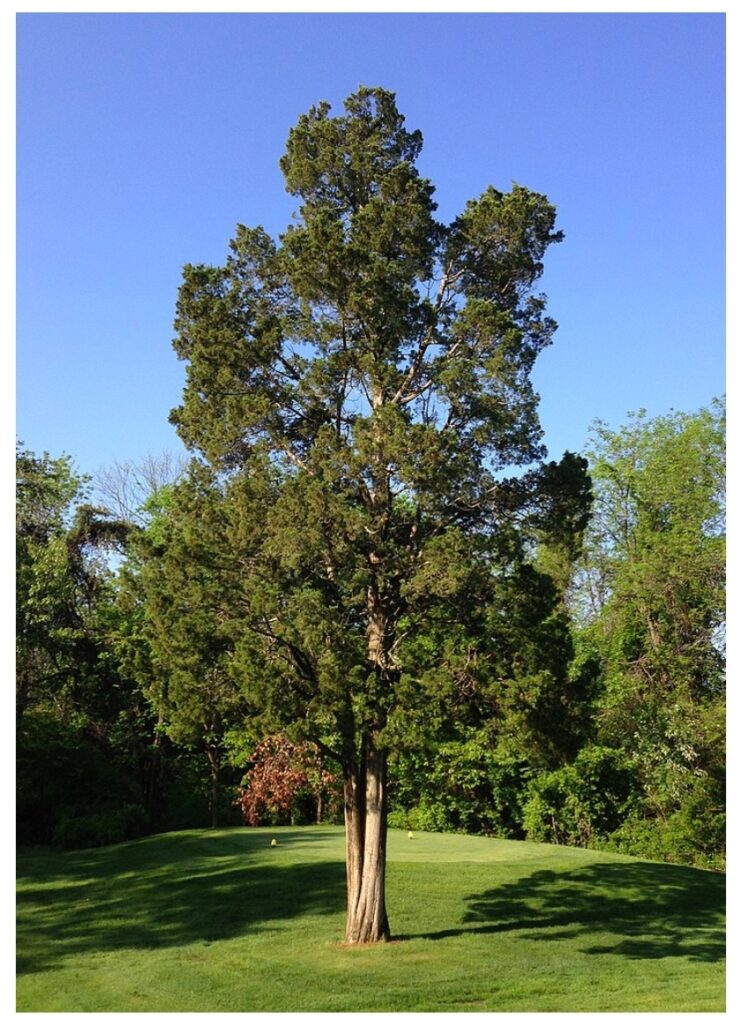
Full sun is the ideal condition for this tree, meaning it should get at least six hours of direct, unfiltered sunlight each day.
Redcedar foliage provides nesting and roosting cover for sparrows, robins, mockingbirds, juncos, and warblers.
The eastern redcedar is an ancient tree, dating back to aboriginal America.
Source: Arbor Day Foundation
Hackberry
(Connecticut, Illinois, Indiana, Rhode Island, South Dakota, Washington DC)
The hackberry is commonly heralded by tree experts as “one tough tree.” Found on a wide range of soils east of the Rockies from southern Canada to Florida, these trees thrive in a broad span of temperatures and on sites that vary from 14 to 60″ of annual rainfall. They can even stand up to strong winds and tolerate air pollution.
The hackberry grows well in a variety of soils. It has some tolerance for both flooding and drought.
All of this hardiness adds up to a good landscape choice, particularly if you’re looking for an energy-conserving shade tree that doesn’t require watering.
The hackberry grows to a height of 40–60 feet and a spread of 40–60 feet at maturity. This tree grows at a medium to fast rate, with height increases of anywhere from 13 inches to more than 24 inches per year.
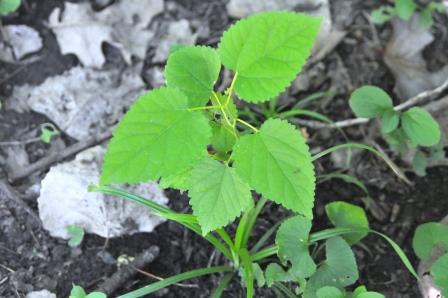
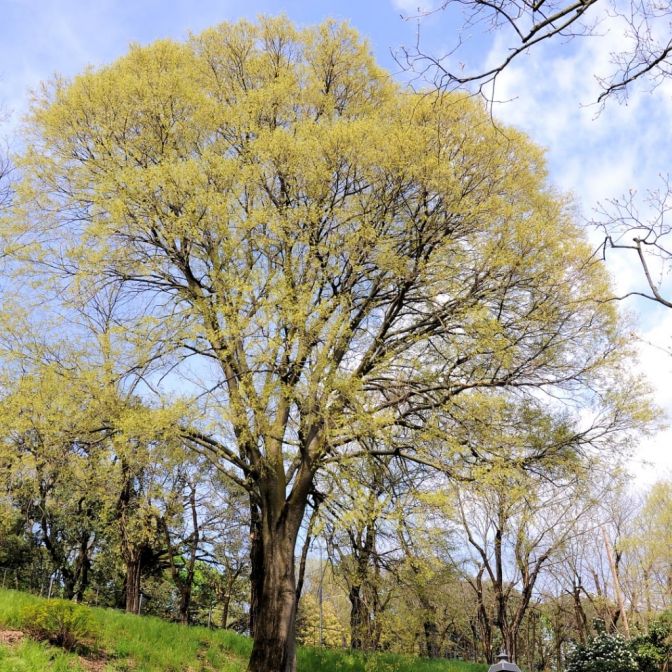
Full sun is the ideal condition for this tree, meaning it should get at least six hours of direct, unfiltered sunlight each day.
The hackberry forms characteristic corky ridges and warts on trunk and branches and tolerates strong winds, pollution, heat, drought, and salt.
It has a growth pattern that resembles the elm – without the susceptibility to disease.
The fruit of the hackberry is popular with winter birds, especially the cedar waxwing, mockingbird and robin. The tree also attracts many butterfly species including American snout, hackberry, mourning cloak, and tawny emperor.
Source: Arbor Day Foundation
Incense Cedar
(Arizona, California, Nevada)
Incense Cedar is a coniferous tree native to western North America.
As the name suggests, all parts of the tree are wonderfully aromatic.
It is a large tree, typically reaching heights of 100–130 feet. The largest known tree, located in Klamath National Forest, Siskiyou County, California, is 157 feet tall with a 39-foot circumference trunk and a 57 foot spread.
This is a fast-growing tree, adding at least 12 inches a year in its early years.
This tree can live to over 500 years old.
With its thick bark, the incense cedar is one of the most fire- and drought-tolerant plants in California.
Plant Incense Cedar in a sunny or lightly shaded area. It grows well in a wide range of soils, growing best in fertile and well-drained soils.
New plants should be kept moist for the first few years.
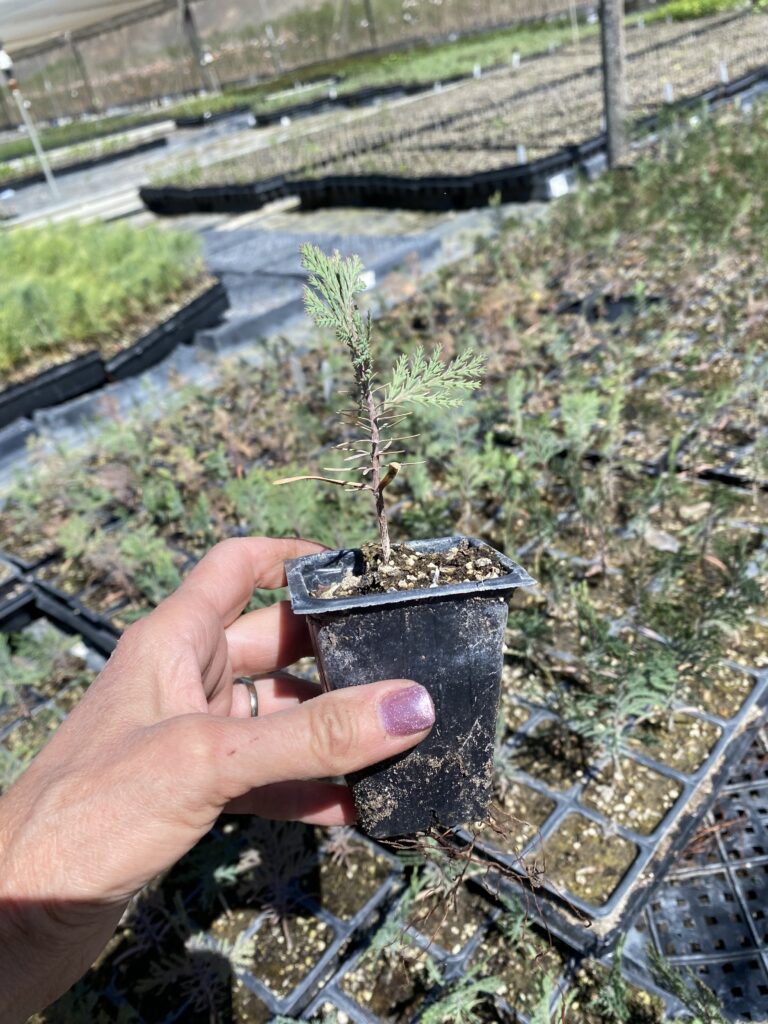
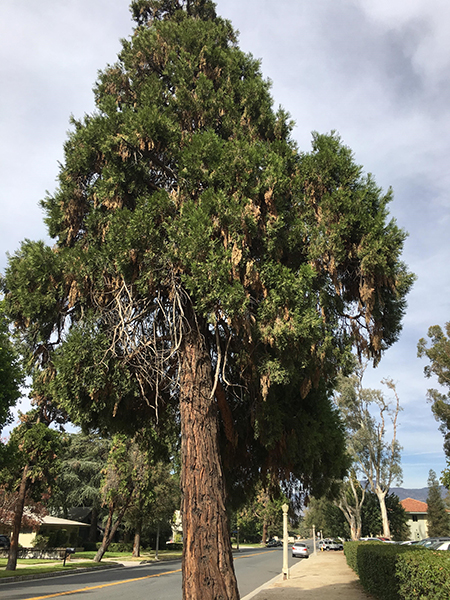
Indigenous people of California use the plant in traditional medicine, basket making, hunting bows, building materials, and to produce fire by friction. A Northern California tribe used branchlets to filter out sand from water when removing toxins from acorn meal; foliage also served as a flavoring.
The tree can be utilized for the creation of essential oils. Scientific studies have shown that these essential oils have the ability to lower the levels of microbes, such as bacteria and viruses.
Source: Wikipedia
Red Maple
(Alabama, Delaware, Florida, Maryland, South Carolina, Tennessee, Virginia, West Virginia)
The Red Maple brings color to your landscape year-round. Green stems turn red in winter, new leaves are red-tinged, turning to green. Fall color is deep red or yellow. Flowers are also red.
The Red Maple grows to a height of 40–60 feet and a spread of around 40 feet at maturity.
This tree grows at a medium to fast rate, with height increases of anywhere from 13 inches to more than 24 inches per year.
Full sun is the ideal condition for this tree, meaning it should get at least six hours of direct, unfiltered sunlight each day.
The Red Maple grows in acidic, loamy, moist, rich, sandy, silty loam, well-drained and clay soils. It prefers wet soil conditions but has slight drought tolerance.
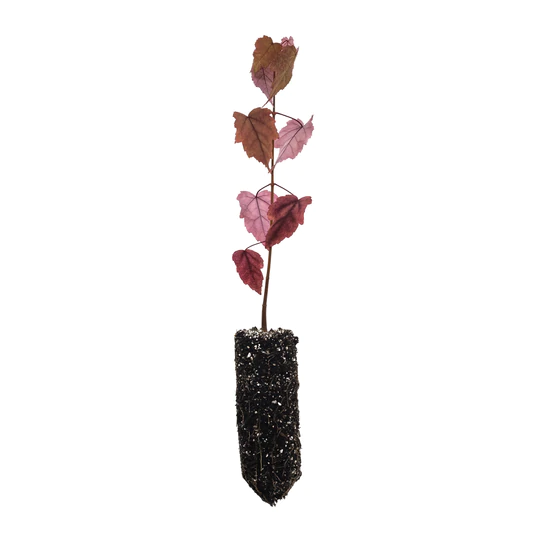
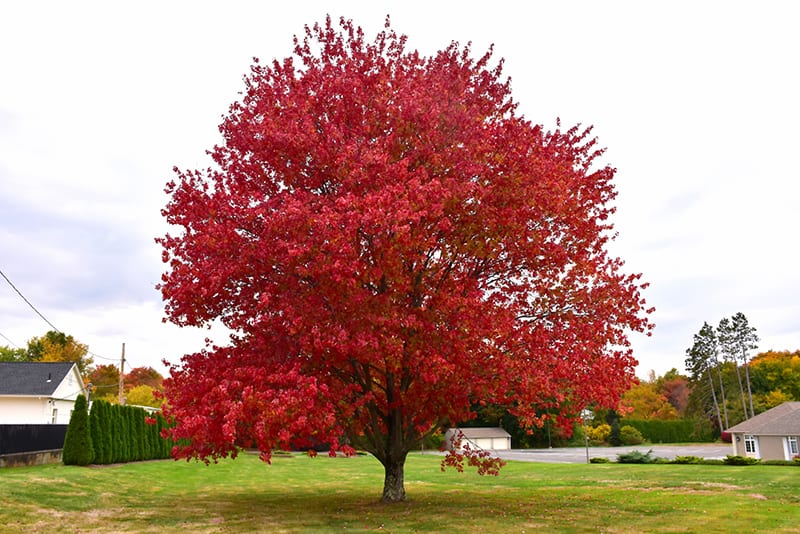
The fruits (samaras) provide food for squirrels and many other rodents. Rabbits and deer eat the tender shoots and leaves of red maples.
The Red Maple has many claims to fame, including the greatest north–south range of any tree species living entirely in the eastern forests (Newfoundland to southern Florida).
The nation’s largest Red Maple lies in Great Smokey Mountains National Park. This tree was declared champion in 1997 by American Forests and is listed in the National Register of Big Trees as being 141 feet tall and just over 7 feet in diameter.
Source: Arbor Day Foundation
Southern Magnolia
(Texas)
The Southern Magnolia has large, creamy white and very fragrant flowers that grace this broad-leafed evergreen in late spring and early summer. Leaves are shiny green, reddish underneath.
It blooms May through June, with some blossoms throughout the summer months.
The southern magnolia grows to a height of 60–80 feet and a spread of around 40 feet at maturity.
This tree grows at a slow to medium rate, with height increases of anywhere from less than 12-24 inches per year.
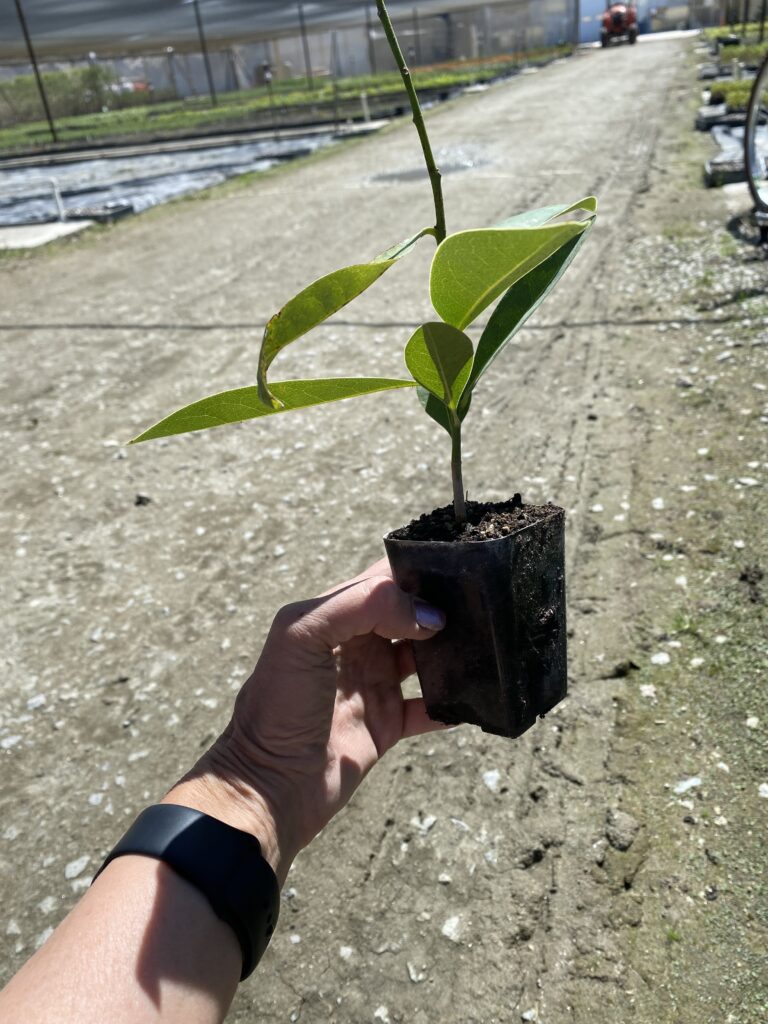
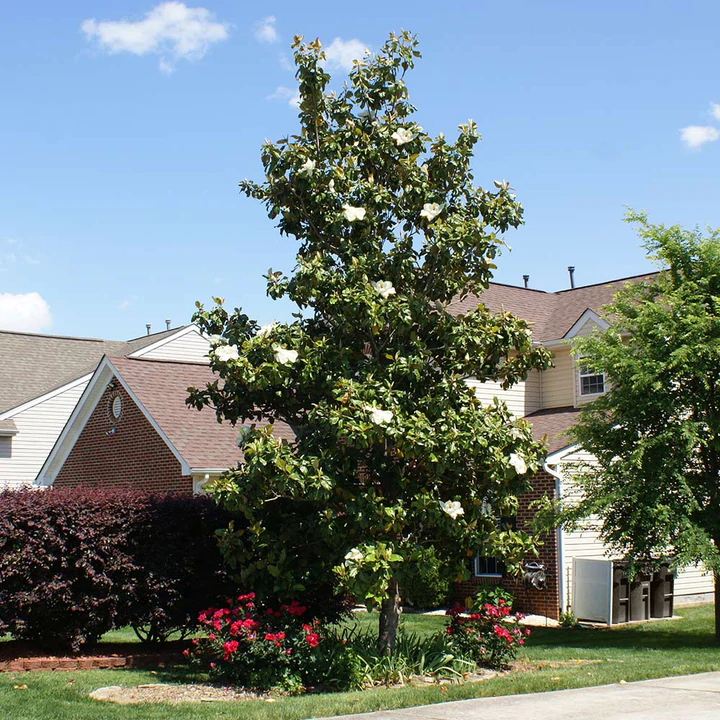
Full sun and partial shade are best for this tree, meaning it prefers a minimum of four hours of direct, unfiltered sunlight each day.
The southern magnolia grows in acidic, loamy, moist, sandy, well-drained and clay soils. It can withstand some flooding and has moderate drought tolerance.
The southern magnolia is an evergreen, keeping most (but not all) of its leaves year-round. It yields fruit that is 3–8″ long, attracting squirrels, rabbits and birds—including wild turkey.
The southern magnolia is better placed in landscaping rather than along a street due to the leathery leaves and large seed pods that are shed in the fall.
The name magnolia honors a French botanist, Pierre Magnol, who admired the tree so much that he transplanted it to Europe 300 years ago.
Source: Arbor Day Foundation
Tamarack
(Alaska, Maine, Michigan, Minnesota, New Hampshire, New York, Vermont, Wisconsin)
Neighborhood Forest is excited to bring the Tamarack to our list of species this year in honor of Tamarack District Library in Lakeview, Michigan, which was instrumental in helping us go viral last year.
One of the most beautiful trees in the far northern forests of North America is the colorful deciduous conifer, commonly called the tamarack.
The Tamarack is one of the few conifer trees that changes color and drops its needles in the fall / winter.
The species turns a dazzling yellow in the fall before dropping its needles to reveal attractive flaking bark in the winter months to have its needles re-emerge a blue-green hue for the spring and summer. Every year those lovely falling needles create a fine mulch that is pleasing to the eye and completely sustainable.
The Tamarack grows up to 40 to 80 feet tall and 15 to 30 feet wide.
This species of tree requires full sun. Tamarack trees are completely intolerant of shade, so it’s important to clear out competing trees or shrubs. Making sure that your tree can grow in direct sun should help to ensure it gets adequate spacing. Place it at least 15 feet from any other trees.
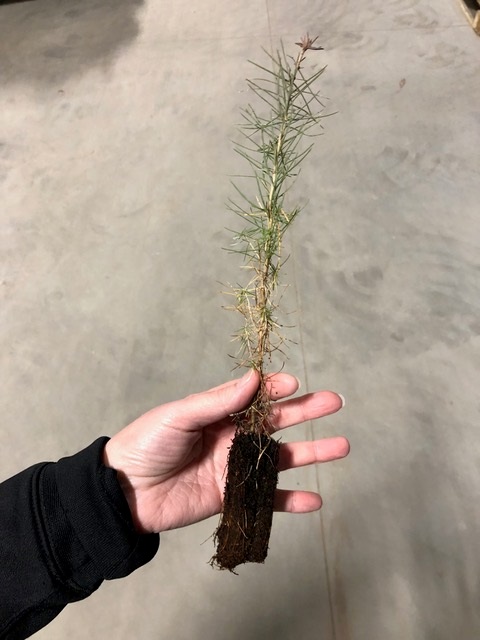
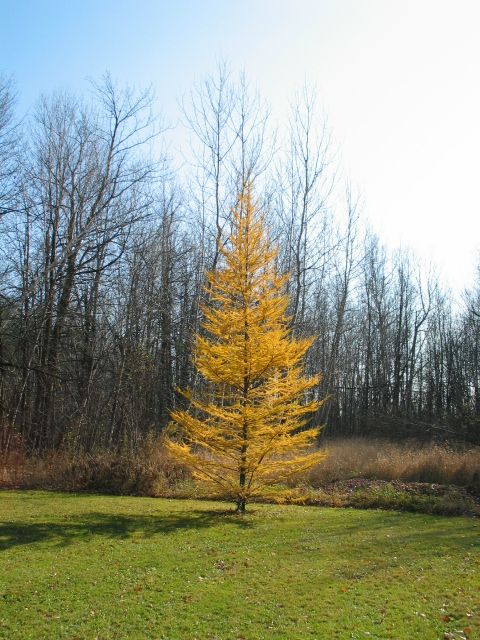
When you decide where to plant your tree, realize that this species does not like competition; it will require a good amount of space between it and any other trees to thrive.
In nature, tamaracks grow in wet areas such as bogs or swamps. Planting it in an area that gets moisture that replicates these conditions will be best for the tree. This is less important than providing ample sun but will cut down on your supplemental watering needs.
Wet, organic soil is best for Tamaracks. It is native to a type of bog called muskeg, which is comprised of peat. This rich wet acidic soil is preferred and will help your tree thrive, but as far as soil needs go, the tamarack is more adaptable here than it is for its sun requirements.
Tamarack trees require some supplemental water, especially during periods of drought and when the tree is first establishing itself. It will not tolerate being overly dry, so keeping the soil beneath it moist is important. On initial planting, adding two to three inches of good organic mulch to the dripline will help retain moisture. After a few seasons, you won’t need to add more mulch since the tree makes its own beautiful needle mulch.
During the first three years, it is important to give your tree water weekly. Follow the standard of 10 gallons per inch of trunk diameter measured by caliper at knee height. If the weather is really dry, increase the water to 15 gallons—the tamarack won’t mind!
Source: TheSpruce.com
White Birch
(Massachusetts, Pennsylvania)
Beauty and romance may be the first images many people associate with the gleaming white paper birch. But this symbol of the north country has earned its place in history as a continuously useful tree that has served North Americans since the earliest days of human activity.
Today it is one of the best-loved trees of the New England landscape, planted often for the beauty of its distinctive bark and golden fall color.
The white birch (also known as paper birch) grows to a height of 50–70 feet and a spread of around 35 feet at maturity.
This tree grows at a medium to fast rate, with height increases of anywhere from 13 inches to more than 24 inches per year.
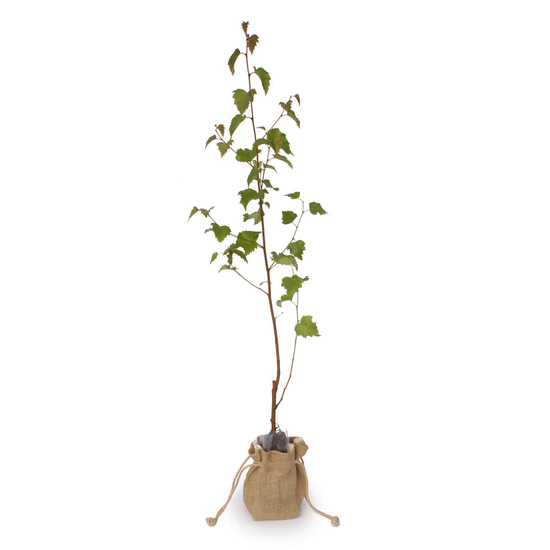
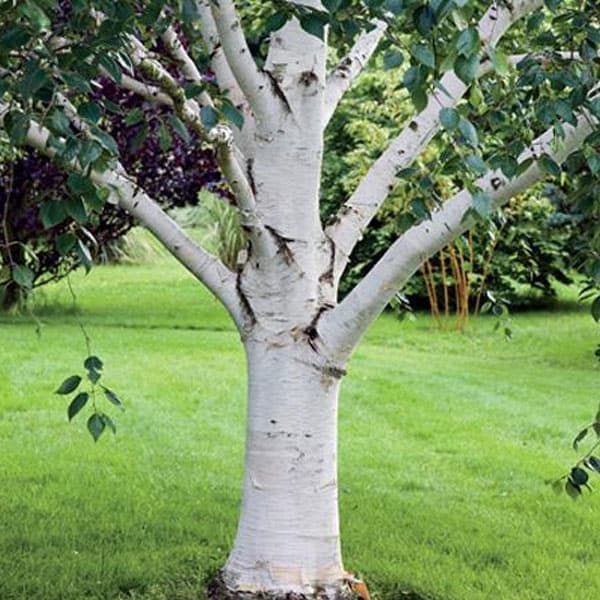
Full sun and partial shade are best for this tree, meaning it prefers a minimum of four hours of direct, unfiltered sunlight each day.
The paper birch grows well in acidic, loamy, moist, sandy, well-drained and clay soils. While it prefers normal moisture, the tree has some drought tolerance.
This tree develops a smooth white bark that curls and peels (once mature), provides bright yellow fall color, and produces brown or green catkins in April and May.
The white birch received its name from the nature of its bark. Long ago, people would peel layers of the thin, paper-like bark and write on it as a way to send messages. Sometimes known as canoe birch—recalling its favor among Native Americans and early fur trappers as a resource for sleek, sturdy, and lightweight watercraft.
Source: Arbor Day Foundation
White Spruce
(Ontario, Canada)
The white spruce grows to a height of 40–60 feet and a spread of 10–20 feet at maturity. This tree grows at a medium rate, with height increases of 13–24 inches per year.
This tree thrives in a lot of sunlight – ideally six hours of direct sunlight per day. The white spruce grows well in a variety of different soils and has some drought tolerance.
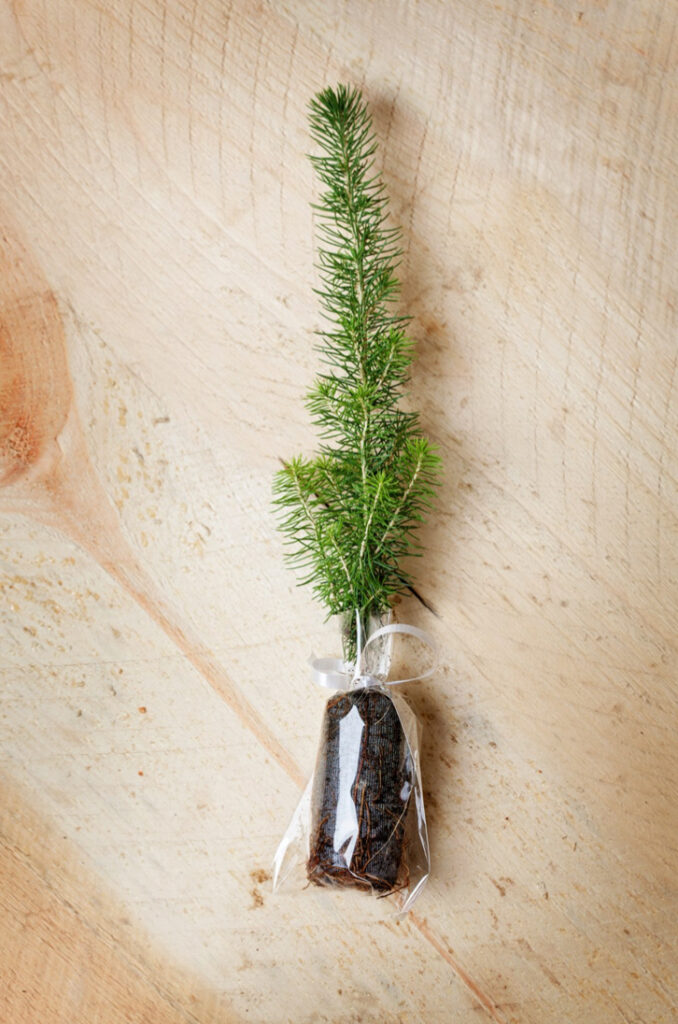
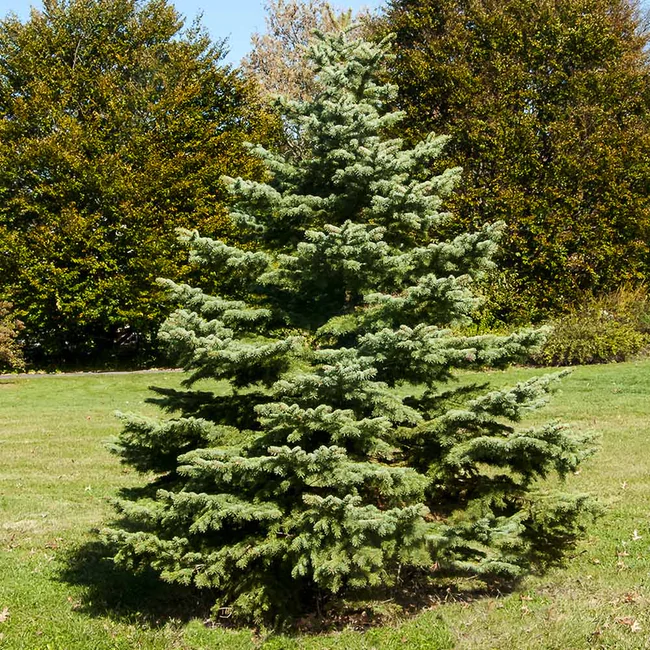
The white spruce does well when transplanted. It can withstand wind, heat, cold, drought, crowding, and some shade. It does well in cities and often serves as rural windbreaks.
Aside from providing nesting for birds and shelter for other animals, white spruces provide food for many kinds of wildlife. Crossbills, evening grosbeaks, and red-breasted nuthatches feed on its seeds. The foliage is eaten by grouse, rabbits, and deer. Red squirrels bite open cones to eat the seeds, and they delight upon young, tender spruce shoots.
When Jacques Cartier sailed up the broad St. Lawrence River in 1535, he became the first European to see North America’s white spruces. As he laid claim to the lands he beheld, he proclaimed them to be “as beautiful…as one could wish for.” The trees, he said, were “the finest trees in the world.”
Source: Arbor Day Foundation
Please check out our planting instructions and “Science of Trees” curriculum here.
We’re in the Home Stretch!
Posted on April 5, 2017 by vnarula
Spring has sprung!
That’s right. In just a few weeks, the tree giveaway will be happening at schools and communities across the US (and even in parts of Canada!).
Did you register for a tree this year? Awesome! You’re all set.
Slipped your mind? Forgot to tie that string on your finger? That’s okay. You’ve earned your good karma points. You still have a chance to register for a tree until Sunday, April 9 even if your school’s deadline has passed.
Is your child’s school participating this year? Can’t remember? You can find out here. Don’t see your child’s school on the list? That’s okay too. You can sign up here. (Make sure you do this on a tablet, laptop or desk computer.)

Spring may be the season for tree planting, but there’s some “family members” that haven’t been feeling the tree hugging love.
You might know one or two. We know one. Surprised how we overlooked him. He loves to dig. He loves dirt and after fire hydrants trees are his best friend. If anyone was a natural at tree planting (or tree wetting!), it’s him!
So rather than feeling left out this year, he took the initiative. We still don’t know how he learned to type. But that’s for another day.
Right now it’s time to exhale, lift our heads up and stretch towards Earth Day. As you enjoy this spring season with its blossoming flowers, blue skies and warmer weather, remember to keep your umbrellas handy. It’s going to be raining trees for the next few weeks!
What Are You Thankful For?
Posted on November 24, 2016 by vnarula
It’s Thanksgiving in America today.
It’s the busiest travel day of the year. Nearly 48 million people will be traveling by car, rail or plane! Three million U.S. airline passengers will swarm airports hoping to catch flights, although many travelers will be stuck at airport checkout counters. Others will be stuck in long security lines holding their shoes, eventually wandering around the terminal in their socks hoping to escape by automobile. Car transportation isn’t any better though. The roads and highways are just as bad, though the bonus is you keep your shoes on.
None of these Thanksgiving travel experiences puts someone in a good mood, but it does burn calories and make a person hungry. So it’s no surprise that at Thanksgiving everyone eats lots of food. There’s the staples like cranberry sauce, turkey and mashed potatoes. There’s new twists on old traditions too – Tofurkey, cauliflower stuffing, and other dairy-free and meat-free options for vegans and vegetarians.
Whether you’re on a special diet or not, today’s the day when rules can be broken. We can loosen our belt four notches, kick our no-carbs diet to the curb and attack apple pies like a ravenous banshee. We justify it with these words: “C’mon! It’s Thanksgiving. It’s only once a year. A little indulgence is okay.”

So this Thanksgiving, whether you’re stuck in security lines or not, whether you’re adjusting the notches on your belt or not, whether you’re eating Tofurkey or not, let’s remember what this holiday is really about. (No, it’s not about the Pre-Black Friday TV Mega Sale at your local Best Buy.)
It’s about giving thanks. Thanks to our beautiful planet for giving us life. And thanks to the amazing trees. They provide us with the apple pie on our plates, the roof over our heads (literally), and so much more. (See video below.)
Let’s be grateful and count our blessings today.
And let’s save our ungratefulness for the food hangover and indigestion tomorrow.
Happy Thanksgiving!
Ready to Decorate Your Home?
Posted on March 23, 2016 by vnarula
Have you noticed all the new home decorating magazines popping up at checkout counters and bookstores lately? It seems there’s a new one arriving everyday.
There must be hundreds of them now. Some are tied to a famous brand or person. Some have European-sounding names. Some are just weird. But regardless of where they fall on the spectrum, most of them are saying the same thing.
Add color! Paint! Renovate! Remodel! Buy nice towels. Done.
Ok, maybe that’s a bit simplified.
Some of the articles have interesting nuggets of advice, but I find most a little over the top. For instance, one magazine suggested my life will find new meaning when I begin to hold regular soirees filled with glitter balloons, spiced pear truffles and some kind of lustrous light candleholders.
Really?
Thanks for the advice, but I’ll pass.
All the inspiration I need is right in front of me. Spring has officially arrived, which means over the next several weeks I’ve got a front-row seat to learn from the Mother of all Home Decorators.
Can anyone match her creativity, her brilliance, when it comes to decorating her own home? What’s a glitter balloon compared to a budding flower? What are spiced pear truffles compared to a juicy, ripe pear she lets me pluck and eat off a tree?

Wouldn’t it be great if we helped Mama Nature out a bit? She’s been doing this for a couple zillion years.
Of course, we can’t match her attention to detail, but I’m sure she wouldn’t mind some extra help. What if we cared for, decorated and celebrated our collective home with the same zeal as she does, with as much love as those magazines want us to care for and celebrate our individual ones?
The good news is we are. Millions of us are coming together on April 22 to honor the greatest home decorator and greatest home ever.
All of us are contributing in our own small way. Neighborhood Forest, for instance, is launching its biggest tree giveaway yet, hoping to give away nearly 10,000 trees to kids during Earth Week (April 18-22).
Do you want a tree for your child? You can sign up (on a laptop, tablet or desktop computer) to get one. To find out if your child’s school participating, you can go to this link: https://www.neighborhoodforest.org/search-for-school/
We know parent participation increases when kids are involved. If a child wants a tree to plant, we don’t want them to go home from school empty-handed. So this year we’ve created a fun video just for them. (See below.)
We hope it will make them smile, reminding them to tell mom or dad not to forget our real “home decorating” day!
Earth Day is coming. Come join the celebration and let’s decorate our home together.
No glitter balloons necessary.
Vivek Narula is the Director of Neighborhood Forest (@treesforkids) – an organization that gives free trees to schoolchildren every Earth Day.
Being Bigger
Posted on October 17, 2015 by vnarula
Remember those days many years ago when the only way to see anything was to look up?
Remember when an upward tilt of your head was followed by a surprise pat on your noggin, a pinch on your cheek, or a remark about your adorability factor?
Well, Neighborhood Forest’s 8 year old spokesman Ishaan knows all about it. And so do some of his friends.
Enjoy! 🙂
Vivek Narula is the Director of Neighborhood Forest (@treesforkids) – an organization that gives free trees to schoolchildren every Earth Day.
And Now a Word from our Spokesman…
Posted on April 7, 2015 by vnarula
Spring is here!
Get the shovels out of the shed, dust off those yard boots, we’re less than two weeks away from Earth Day.
To kick off the season of grass stained knees and dirt-caked hands, Neighborhood Forest’s 7 year old spokesman shares an Earth Day message about feet, footprints and trees.
Enjoy!
Vivek Narula is the Director of Neighborhood Forest (@treesforkids) – an organization that gives free trees to schoolchildren every Earth Day.
Horace Cleveland — The Man behind the Cape
Posted on August 22, 2014 by vnarula
“Why aren’t there condos here?”
That’s the thought that bobbed around in my head when my brother and I biked around Minneapolis last summer.
Biking around the city was my brother’s idea. It was my first summer in Minneapolis after my move, and he thought it was the best way for me to see the city up close.
Up to that point my view of the city was limited, confined to the window seats of planes when I’d visit my brother and his family during the Christmas holidays. It was always the same. I looked down from several thousand feet and saw a city covered in blankets of snow with a landscape that looked like the terrain of Antarctica.
My yearly winter visits didn’t allow for much outdoor sightseeing either. The weather was rarely friendly in December, and I didn’t find it appealing to dress up like the Michelin Man and waddle around as a tourist in a massive parka, four scarves, ski mask, goggles and ear muffs.
It wasn’t my idea of fun. Maybe that’s why my brother kept my “outdoor” activities within climate-controlled environments, like walks around the downtown skyway, social gatherings (indoors of course), or coffee shop chats where he pressured me to warm up my innards with mugs of hot chocolate.
My summer bike ride, on the other hand, was the complete opposite. My view of the city transformed from white, grey and frozen to Dorothy in Technicolor in the Wizard of Oz. I was led me through parks and wooded areas, over a winding creek and quaint bridges, around gorgeous trees and beautiful lakes.
I thought I was dreaming. I was engulfed in green everywhere, pinching myself, thinking I’d wake up and the continuous backdrop of trees, lakes and parks would disappear, and I’d be staring out the window of another plane again.
Why hadn’t I experienced this feeling in other places? I’d visited other cities with green space, but they didn’t seem as extensive or well-planned. Some cities had tiny scraps of green refuge and whatever was left of them was being overtaken by an infestation of condos, strip malls or armies of Starbucks.
Who was responsible for my oasis of bicycling happiness that day? Was it the work, I thought, of a mighty environmental superhero, someone with blue tights, a cape and a big S stretched across his chest?
I knew my superhero idea was more comic book imagination than reality, but I was curious to find out if it was true. My curiosity led me to a hero of sorts, although his blue tights and cape were replaced with a chin curtain, blazer and bow-tie.
His name was Horace Cleveland.
Horace Cleveland may not have leaped tall buildings in a single bound or had x-ray vision, but he definitely saw the future. Here’s what he said almost 120 years ago:
“Look forward for a century to the time when the city has a population of a million, and think what will be their wants. They will have wealth enough to purchase all that money can buy, but their wealth cannot purchase a lost opportunity or restore a natural feature of grandeur and beauty, which would then possess priceless value…”
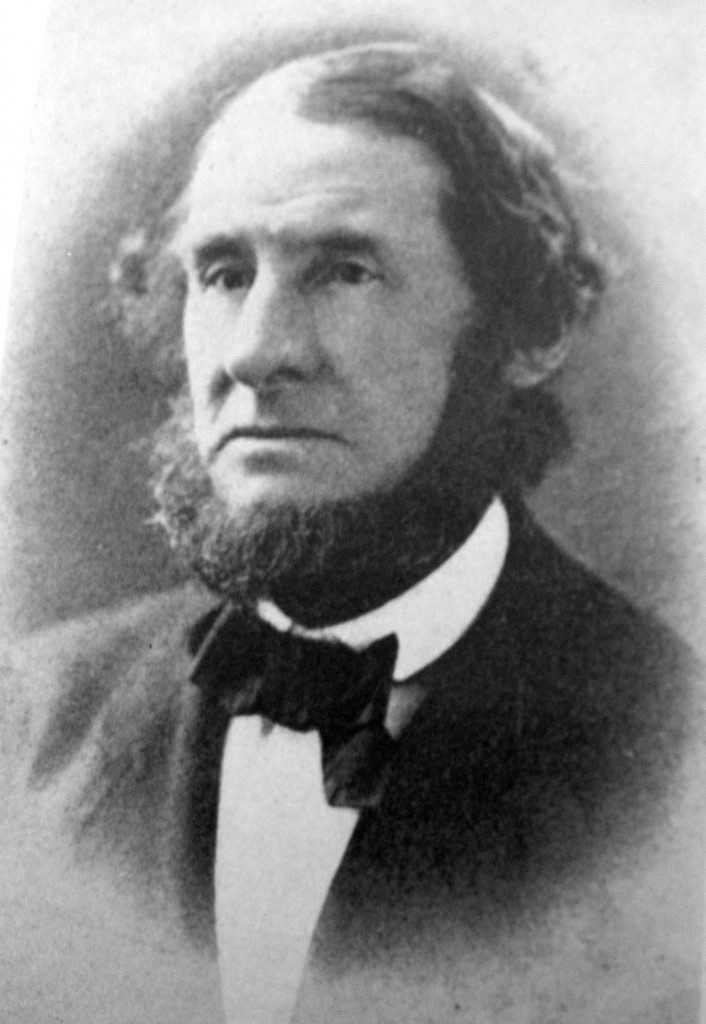
Fortunately, the Minneapolis Board of Park Commissioners knew the importance of seizing a lost opportunity and gave Cleveland, a noted landscape architect, the thumbs up to plan out his vision. With the support of Charles Loring, an influential commissioner and the first president of the Minneapolis Park Board, Cleveland became the mastermind behind a number of parks and interconnected parkways that preserved the existing natural features within and around the city.
Future park commissioners and superintendents expanded on his vision, particularly Theodore Wirth (an instrumental advocate of the Minneapolis Park System), which ultimately lead to the famous “Grand Rounds,” an interconnected series of parkways, and parks, centered on the Mississippi River.
Broken down, the city now has parks within 6 blocks of every resident, comprising a 6,400-acre system consisting of local and regional parks, playgrounds, golf courses, gardens, biking and walking paths, nature sanctuaries, the Chain of Lakes (which receive over 5 million visits yearly) and a 55-mile parkway system.
Need to soak that all in? Here’s a cool video that shows how it all began.
Over a century later, the Minneapolis Park System is still getting top marks. When asked in a recent survey what percentage of Minneapolis residents saw the parks and lakes as a unique and valuable asset, the number was 99 percent! What’s more, the city was voted this year as having the best park system in the country.
Much of the praise can be traced back to Cleveland’s influence, his philosophy of open spaces, natural design, and the importance of preserving these public spaces for future generations to enjoy.
I hope my work at Neighborhood Forest can continue to enhance the natural beauty of our neighborhoods like Cleveland and the city’s visionaries did. The city of Minneapolis is beautiful, and I hope our work can take that beauty to the surrounding suburbs, other towns and cities across the state, and eventually across the nation.
I imagine that would make Horace Cleveland happy, other than trading in his bow-tie and blazer for a cape.

Image source: 3rd image
Vivek Narula is the Director of Neighborhood Forest (@treesforkids) – an organization that gives free trees to schoolchildren every Earth Day.





